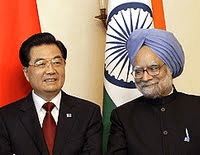Chinese Premier Wen Jiabao visited New Delhi last week for the first time in almost five years, accompanied by more than 300 Chinese business leaders. The composition of Wen's delegation made clear that the Chinese were eager to return to the formula successfully pursued by Chinese and Indian officials during the past two decades: keeping their issues of divergence -- primarily strategic issues such as their boundary disputes, PRC ties with Pakistan, and the Sino-Indian military rivalry -- in the background, while focusing their talks on areas of greater potential convergence, such as expanding mutual trade and investment opportunities.
Although this approach was pioneered by former Indian Prime Minister Rajiv Ghandhi in 1988, when he became the first Indian prime minister in 34 years to visit Beijing, some Indians now worry that Beijing seeks to make their country economically dependent on China in order to enhance the PRC's leverage regarding areas of competition and conflict.
Indian trade with China has been growing faster than with any other country, making the PRC India's largest trading partner in 2008. Whereas bilateral commerce amounted to only $3 billion in 2001-2002, two-way trade should reach approximately $60 billion this year. Yet, the trade imbalance in Beijing's favor has widened just as dramatically in recent years, and could exceed $25 billion for 2010 -- India's highest bilateral annual trade deficit with any single foreign partner. The multi-billion trade gap is partly caused by the Chinese buying primarily low-value Indian products: More than half of the PRC's imports consists of raw iron ore and other low-end commodities and raw materials, rather than high value-added goods such as processed steel.

